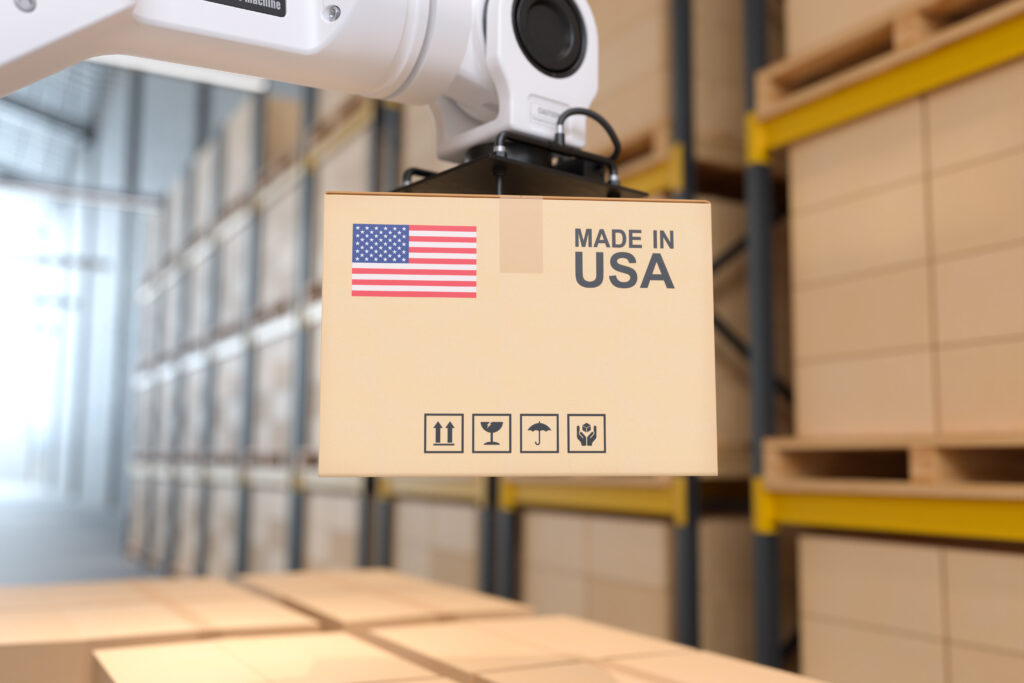August 30, 2025 | Washington, US: The United States has terminated its longstanding US Tariff on Small Packages imported from foreign countries, representing a significant transformation in the landscape of global e-commerce and trade. This exemption, referred to as the US tariff on small packages “de minimis” rule, previously permitted shipments valued at $800 or less to enter the country without incurring customs duties.
According to government officials, the modification aims to safeguard domestic industries, increase federal revenue, and respond to security issues. Nevertheless, businesses, postal services, and consumers across the globe are now confronted with increased expenses, delays, and the necessity to adapt to new customs regulations.

Impact of US Tariff on Small Packages
The US tariff on small packages exemption, which was first established in 1938, aimed to streamline customs inspections for low-value imports. In 2015, the exemption threshold was significantly increased from $200 to $800, positioning it as one of the most favorable exemptions worldwide. This policy change not only fostered the growth of online shopping but also reduced the bureaucratic requirements associated with customs paperwork; however, it inadvertently created a loophole for substantial importation activities.
Read More: AI Adoption Rate in UAE Surges as 80% of Professionals Use AI Tools Daily
As of 2024, over 1.3 billion parcels entered the United States without incurring duties, a remarkable increase from 139 million parcels in 2015. A significant portion of this growth can be attributed to e-commerce platforms such as Shein, Temu, and AliExpress, which heavily depend on direct-to-consumer shipping models that benefited from the US tariff on small packages.
In response to concerns regarding these developments, the new policy stipulates that all small parcels will be subject to tariffs. During an initial six-month transition phase, foreign postal services will have the option to either pay a fixed duty ranging from $80 to $200 per package, depending on the country of origin, or to utilize standard tariff rates. By February 2026, the exemption for duty-free small shipments will be entirely abolished.
Officials have identified three primary motivations underlying the recent policy change. First, security concerns were raised by customs officers, who noted an increasing trend of small packages being utilized for smuggling prohibited substances, such as fentanyl. Second, the government anticipates a significant increase in revenue, estimating that new duties could generate up to $10 billion annually. Third, the argument for fairness has been put forth by domestic manufacturers, who contend that they incur higher import expenses while foreign vendors manage to avoid tariffs through the US tariff on small packages.
This policy alteration has already led to disruptions in global shipping logistics. Postal services across Europe and Asia have temporarily suspended shipments destined for the United States to adapt to the newly implemented duty systems. Major logistics providers, including FedEx, UPS, and DHL, have revised their operational protocols but have cautioned clients about potential delays and increased handling costs. Furthermore, smaller shipping companies are likely to encounter even more substantial difficulties in navigating these changes.
E-commerce platforms are currently experiencing significant challenges. Following the recent announcement, the share prices of Etsy, eBay, and Shopify have declined, indicating market concerns regarding potential decreases in sales. A large number of sellers rely on international orders; however, the introduction of tariffs poses a risk to their profit margins. Consequently, some businesses are contemplating the relocation of their inventory to warehouses situated in the United States in an effort to avoid these duties. Nevertheless, smaller merchants may find it difficult to endure the additional financial burdens imposed by these conditions.

For consumers, the new policy signifies the conclusion of years characterized by inexpensive international shopping. Items priced under $50, which previously entered the country without incurring any duties, will now be subject to increased tariffs and lengthier customs clearance processes. Analysts predict a rise in prices and a decrease in the availability of foreign goods as the US tariff on small packages exemption disappears. However, domestic sellers may experience advantages due to a narrowing price disparity.
The international community has reacted with caution and concern regarding recent developments. The European Union has issued a warning about potential disruptions in trade and is actively considering countermeasures. Furthermore, export-oriented economies in Asia, such as South Korea and Vietnam, are currently evaluating the implications for small exporters. Global trade associations have articulated that the new policy may lead to increased costs and a reduction in consumer options, thereby exacerbating the challenges faced by already vulnerable supply chains.
Trade analysts assert that this policy shift aligns with a broader United States strategy aimed at tightening import regulations. They contend that it may catalyze trends of nearshoring, whereby companies relocate production facilities closer to the United States. In addition, logistics experts anticipate a subsequent increase in the demand for American warehousing and distribution services.
What Comes Next
The six months are going to be key. Postal operators have to develop mechanisms for collecting duties, and customs officers across the world must prepare now to process billions of more declarations. The flat-duty choice provides short-term flexibility, but there comes a time when, after it expires, all mail will be subject to value based tariffs under the replacement of the US tariff on small packages.
Big retailers can adjust by eating some cost or sending inventory to the US, but smaller exporters would lose access to the American market. E-commerce companies are under pressure to keep prices competitive even as duties increase.
Consumers will see clear changes. Discount-priced shopping from world bazaars will become both more costly and more sluggish, de-incentivizing foreign orders. Domestic sellers may even benefit, although product variety may atrophy as foreign sellers pull back.

The end of the US tariff exemption on tiny packages is a harbinger for more stringent global trade enforcement. And, in closing one of the world’s most generous customs loopholes, the United States has already started to change the way goods flow around the world. And for businesses and consumers around the world, it is a new reality: higher tariffs, stricter customs rules and fewer shortcuts in the global economy.
The end of the US tariff on small packages represents a major turning point in global commerce. What began as a policy to simplify customs has become a central issue in international trade.
The US government hopes to secure borders, raise revenue, and protect local businesses. But the effects are global: disrupted shipping networks, higher consumer prices, and difficult adjustments for e-commerce platforms.
As the transition period unfolds, the policy signals the close of the duty-free era and the start of a more regulated global marketplace—one where businesses and consumers must adapt to higher costs and stricter oversight.
Also Read: 50 Percent US Tariffs on India: Why US Tariffs Impact Indian Exports?
















